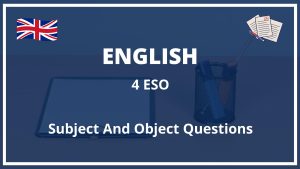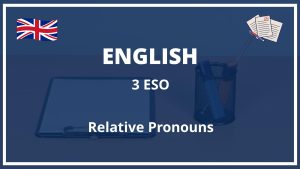
Abrir Ejercicios Object Pronouns 1 ESO | Exercices
Los object pronouns son pronombres que reemplazan a un nombre o sustantivo en una oración. En inglés, los pronombres objeto son: me, you, him, her, it, us, you y them. Los pronombres objeto se usan después de un verbo o una preposición. Veamos algunos ejemplos:
I wash myself. Me lavo.
She washes herself. Ella se lava.
They wash themselves. Ellos se lavan.
We brush ourselves. Nos cepillamos.
You brush yourself. Te cepillas.
Remember, the object pronoun replaces the object noun. In other words, it answers the question: Who or what receives the action of the verb?
Here are some more examples:
I see you. Te veo.
He sees her. Él la ve.
They see us. Nos ven.
We see them. Ellos nos ven.
You see it. Lo veo.
Remember, the object pronoun replaces the object noun. In other words, it answers the question: Who or what receives the action of the verb?
Ejercicios Resueltos Object Pronouns Ingles 1 Eso
Los object pronouns en inglés son: me, you, him, her, it, us, you y them. En esta lección vamos a aprender a usar estos pronombres y a conjugarlos en los diferentes tiempos verbales.
Los object pronouns reemplazan a un noun (sustantivo) o a un pronoun (pronombre) que es el objeto de una oración. Por ejemplo:
I see him. (Veo a él.)
Do you see me? (¿Me ves?)
They don’t see us. (No nos ven.)
En estos ejemplos, him, me y us son object pronouns. Observe que en inglés no se usa el pronombre it como objeto. En su lugar se usa this o that + noun.
Veamos ahora cómo se conjugan los object pronouns en los diferentes tiempos verbales.
Present Simple
Sujeto Pronombre
I me
you you
he him
she her
it it
we us
you you
they them
Ejemplos:
I see him. (Veo a él.)
Do you see me? (¿Me ves?)
They don’t see us. (No nos ven.)
Present Continuous
Sujeto Pronombre
I me
you you
he him
she her
it it
we us
you you
they them
Ejemplos:
I am seeing him. (Lo estoy viendo.)
Are you seeing me? (¿Me estás viendo?)
They aren’t seeing us. (No nos están viendo.)
Past Simple
Sujeto Pronombre
I me
you you
he him
she her
it it
we us
you you
they them
Ejemplos:
I saw him. (Lo vi.)
Did you see me? (¿Me viste?)
They didn’t see us. (No nos vieron.)
Present Perfect
Sujeto Pronombre
I me
you you
he him
she her
it it
we us
you you
they them
Ejemplos:
I have seen him. (Lo he visto.)
Have you seen me? (¿Me has visto?)
They haven’t seen us. (No nos han visto.)
La conjugación de los object pronouns en los demás tiempos verbales es la misma que en los ejemplos anteriores. Ahora veamos cómo se usan los object pronouns en oraciones afirmativas, negativas e interrogativas.
Oraciones afirmativas
Para conjugar una oración afirmativa en inglés, se debe colocar el pronombre objeto antes del verb (auxiliary verb + main verb). Por ejemplo:
I see him. (Veo a él.)
You see me. (Me ves.)
They see us. (Nos ven.)
Oraciones negativas
Para conjugar una oración negativa en inglés, se debe colocar el auxiliary verb (be, do o have) + not antes del pronombre objeto. Por ejemplo:
I don’t see him. (No lo veo.)
You don’t see me. (No me ves.)
They don’t see us. (No nos ven.)
Oraciones interrogativas
Para conjugar una oración interrogativa en inglés, se debe colocar el auxiliary verb (be, do o have) antes del subject pronoun y el pronombre objeto después del main verb. Por ejemplo:
Do I see him? (¿Lo veo?)
Do you see me? (¿Me ves?)
Do they see us? (¿Nos ven?)








